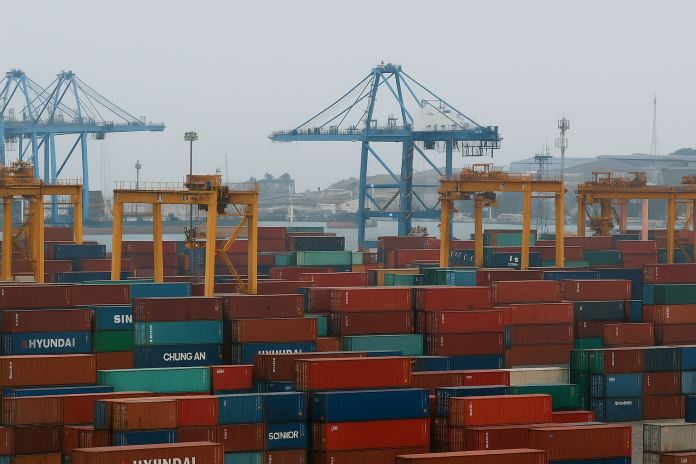In late July 2025, South Korea made a last-minute trade agreement with the United States.
A Deal Signed Under Pressure
This came just days before a deadline that could have resulted in steep new tariffs on South Korean exports. Under the deal, most South Korean goods shipped to the U.S. will now face a 15% tariff instead of the previously proposed 25%.
To secure this reduced rate, South Korea agreed to invest a massive $350 billion in the United States. Out of this, $150 billion will go into shipbuilding projects. The remaining $200 billion will be used in areas like semiconductors, nuclear energy, battery production, and biotechnology.
This agreement helped ease fears in South Korea’s export-heavy industries. Many believed the higher tariffs would hurt its major sectors such as car manufacturing, electronics, and heavy machinery. The new deal provided some relief and allowed businesses to continue shipping products to one of their biggest overseas markets.
However, while the spotlight is on this successful negotiation, another issue inside South Korea has gained attention. This issue isn’t about factories, but about services — the part of the economy that includes things like healthcare, tourism, education, restaurants, logistics, and IT support. Unlike the strong export and industrial sectors, the service sector has long been South Korea’s weak point.
🛢️ Tariff terror averted — U.S.–South Korea ink explosive $100B energy & $350B investment pact
Trouble Inside the Economy
South Korea is known for its strong factories. For decades, it has exported cars, smartphones, TVs, ships, and machines around the world. This helped it grow fast and become one of the biggest economies in Asia. But the same success story doesn’t apply to its service sector.
While many workers have moved into service-related jobs over the years, these jobs have not become more productive. Productivity means how much value or output a worker creates in a certain amount of time. In South Korea, workers in the service sector create less value compared to those in manufacturing.
This has been a problem since the 1990s. Even though service jobs now make up 65% of employment in the country, the productivity of these jobs is only about 40% of what is seen in the manufacturing sector. This is a very low rate, especially when compared to other major economies like Japan and Germany, which also have strong factories but more balanced service productivity.
The issue is not just about numbers. A weaker service sector means the country is more exposed to risks from outside. If global demand for exports drops, the economy slows down. But with a strong domestic service sector, people can still find jobs and spend money locally. That acts as a cushion when things go wrong in global trade.
During the COVID-19 pandemic, South Korea’s economy felt a sharp slowdown. One of the biggest reasons was the poor performance of the private service sector. As people stayed home and limited their spending, the economy’s weak spots were exposed. While manufacturing bounced back quickly, services lagged far behind.
Why Reforms Are Needed Now
The recent U.S. trade deal highlights this economic gap even more. South Korea had to act fast to protect its factory-based industries. But its service sector remains under pressure and lacks the same level of protection, investment, and reform.
U.S. Unleashes New Trade Weapon—25% Tariffs to Hit Japan, South Korea
Reports show that the country’s laws and systems are still based on old economic models. These models worked well when factories were the center of everything. But now, the world is moving towards digital platforms, online services, artificial intelligence, and hybrid businesses that mix tech with services. South Korea’s systems aren’t fully ready for these changes.
Even though service industries like telemedicine, smart logistics, digital content, and cloud computing are growing globally, South Korea hasn’t fully tapped into this potential. Despite having strong technical skills and modern infrastructure, the service sector hasn’t caught up.
Another problem is the number of small businesses and self-employed workers in the country. Many of them are running without proper support or access to good financial systems. These small operations often struggle to grow, invest, or innovate. This limits the service sector’s ability to modernize and compete.
There’s also a lack of larger firms in the service space that can offer stable employment and better wages. In contrast, the manufacturing sector has well-established global brands that employ thousands. This difference creates a gap in job quality and long-term career options between the two parts of the economy.
The recent $350 billion investment deal signed with the United States mainly supports industrial areas — shipbuilding, semiconductors, and high-tech manufacturing. While these are important, they do not address the domestic need for stronger service industries.
The focus on protecting exports is important for now. But it also shows how much South Korea depends on global trade. With manufacturing near its growth limits, internal areas like services need attention. Ignoring this could create more problems when the next global shock happens.


